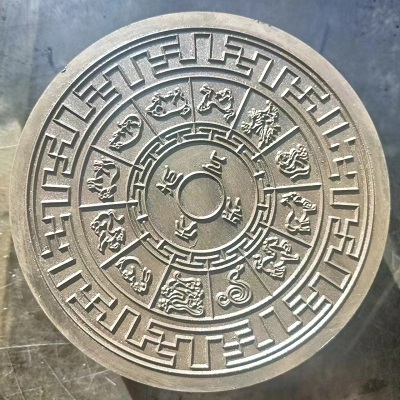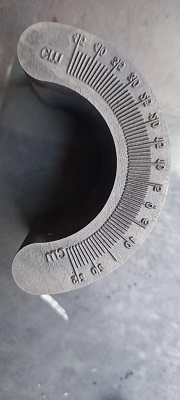Circular stamp
Fast and efficient process: Arc stamping can create intricate shapes and designs on metal surfaces in a quick and cost-effective manner.
Precision and accuracy: The high heat generated by the electric arc allows for precise and detailed stamping, resulting in high-quality finished products.
Versatility: Arc stamping can be used on a wide range of materials, including metals like steel, aluminum, and titanium, as well as plastics.
Minimal material distortion: The localized heating process of arc stamping helps prevent excessive distortion or warping of the material, resulting in a more uniform finished product.
Cost-effective tooling: Arc stamping equipment is relatively affordable and requires minimal maintenance, making it a cost-effective solution for manufacturers.
Environmentally friendly: Arc stamping produces minimal waste and does not use chemicals or solvents, making it a more environmentally friendly option compared to other stamping methods.


Arc stamping, also known as electric arc stamping or spark stamping, is a metalworking process that involves using an electric arc to create intricate designs, lettering, or patterns on metal surfaces. Here are some details about the arc stamping process:
Principle: Arc stamping uses an electric arc between an electrode and the workpiece to heat and vaporize the target material, creating a controlled spark or arc that engraves or marks the surface of the metal.
Equipment: The primary components of an arc stamping system include a power source, an electrode, and a workpiece holder. The power source provides the electrical energy to generate the arc, while the electrode delivers the current to the workpiece, creating the desired marking.
Material: Arc stamping can be performed on a variety of metals, including steel, aluminum, copper, brass, and titanium. It is commonly used in the automotive, aerospace, and electronics industries for marking or branding components.
Process: The arc








